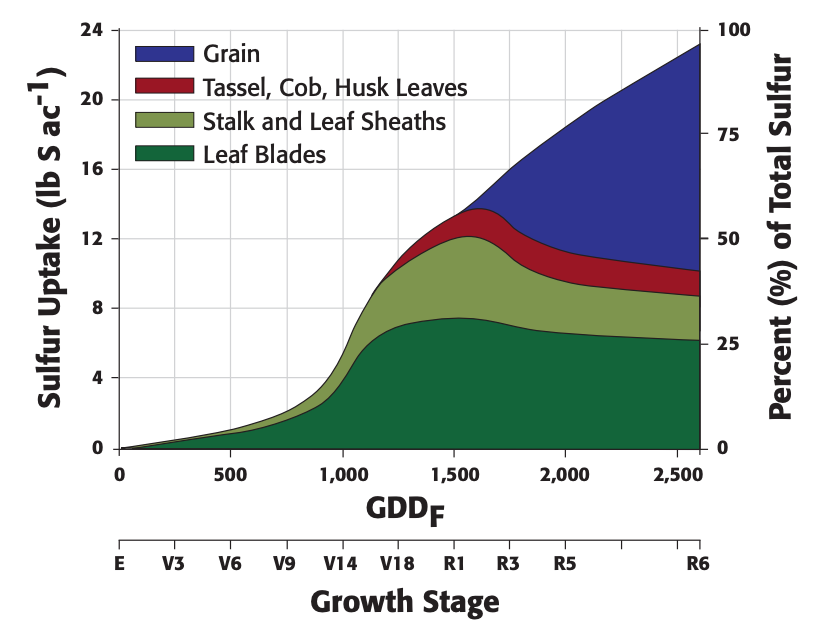
In recent years there has been a lot of talk about sulfur. Sulfur is involved in protein formation, is necessary for the formation of chlorophyll, aids in oil formation in soybeans and canola and is tied to nitrogen uptake in plants. A nutrient we never talked about and tended to take for granted is now becoming an important nutrient in cash crop production. So why is it becoming necessary to provide proper Sulphur fertility to cash crops?
Decades ago, industry through coal usage and air pollution contributed enough sulfur to the atmosphere, that the Great Lakes basin received enough sulfur through rain to maintain good soil fertility levels. At the beginning of the 1980’s, annual sulfur contributions from pollution were approximately 24 lb./ac/yr. Today that has dropped below 3 lb./ac/yr.
Sulfur is required for nitrogen uptake. It is estimated that for every 10 lb. of nitrogen, require 1 lb. of S, so for a corn plant to take up 180 lb. of N/ac, the plant also requires approximately 18 lb. of S/ac. Based on current atmospheric supply, S is under applied in our soil, and with cool spring conditions limiting microbial contributions, sulfur is likely limiting in the early spring during plant establishment.
Sulfur is present in the soil in two forms. The first is the sulphate form (SO4-2). This form is the available form for plant uptake, in this form it is prone to leaching and loss. The second is Elemental sulfur (S0). This form is found in the soil organic matter and is more stable in the soil but must be converted to the sulphate form by soil bacteria to be taken in by the plant. This conversion is dependent on soil temperature and soil moisture.

Figure 1- Sulfur corn demand by growth stage

Figure 2-
White Line – Sulfur plant requirements throughout growing season,
Red Line – Sulfur availability though growing season
Sulfur is non mobile in the plant, so sulfur is required continually throughout the growing season, with approximately 50% required after tasseling (Figure 1) corresponding with nitrogen uptake. This late season demand can result in under supply especially in lighter low organic where low organic matter and in season sulphate leaching result in increased leaching and lower mineralization.
To allow for season long sulfur availability especially on lighter soils, it is important to ensure your fertility program has a mix of sulphate and elemental sulfur (Figure 2). Sources of sulphate include KMAG and Sulphate of potash, while elemental sulfur is found in Sulfur 90. Products like MESZ have a mix of sulfate and elemental allowing for better season long availability.
As nitrogen prices increase, sulfur is essential to ensure optimal N uptake as well as plant health and grain quality. On lighter soils, proper sulfur fertility will ensure season long supply and the best value for your fertility program.
Jason VanMaanen – CCA
Southwest Agromart Ltd.

